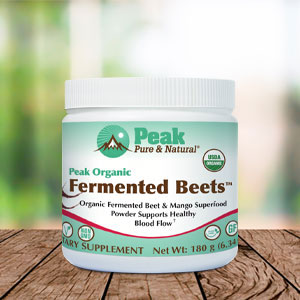Get Easy Health Digest™ in your inbox and don’t miss a thing when you subscribe today. Plus, get the free bonus report, Mother Nature’s Tips, Tricks and Remedies for Cholesterol, Blood Pressure & Blood Sugar as my way of saying welcome to the community!
4 food habits Harvard says will lower heart disease risk

Diet is one of the most effective weapons you have in the fight against heart disease. But what healthy eating habits do your heart the most good?
You’ve probably heard a variety of advice about heart-healthy eating… some of it conflicting. That’s because there’s no one-size-fits-all approach to preventing heart disease through diet. A lot of dietary paths can lead you to the same end goal — a healthy heart.
But even though there isn’t one diet that everyone must follow to keep their heart healthy, there are some guidelines you need to know… otherwise, you might stray too far into diet habits that harm your heart rather than help it.
Luckily, a new study identified four approaches to healthy eating that can keep you on the right track when it comes to eating for a healthy heart…
Eating approaches that lower heart disease risk by up to 21 percent
Recent research from Harvard T.H. Chan School of Public Health identified four healthy eating patterns that lower the long-term risk of cardiovascular disease.
In the study, researchers examined data from 74,930 women enrolled in the Nurses’ Health Study, 90,864 women in the Nurses’ Health Study II and 43,339 men in the Health Professionals Follow-Up Study. Participants in these studies were asked to share their eating habits every two to four years for several decades.
Researchers compared study participants’ eating habits to four healthy eating patterns using a scoring system. The higher a person’s score, the more closely they stuck to one of these patterns. The four healthy eating patterns they used were:
- Healthy Eating Index-2015 (HEI-2015);
- Alternate Mediterranean Diet Score (AMED);
- Healthful Plant-Based Diet Index (HPDI);
- and Alternate Healthy Eating Index (AHEI).
After crunching all the numbers, researchers found that people who followed one of these four eating patterns most closely reduced their risk of cardiovascular disease by 14 to 21 percent. In fact, all these eating patterns were statistically significantly associated with a lower risk of both coronary heart disease and stroke.
“There is no one-size-fits-all diet that is best for everyone. One can combine foods in a variety of flexible ways to achieve healthy eating patterns according to individuals’ health needs, food preferences and cultural traditions,” said study author Frank Hu, Fredrick J. Stare Professor of Nutrition and Epidemiology and chair of the Department of Nutrition.
The down-low on each of these heart-healthy diets
So, now, the question of the hour is… what do the heart-healthy eating patterns used in this study entail? What can you eat? Here’s a quick summary of each:
#1 — Healthy Eating Index-2015 (HEI-2015)
Healthy Eating Index-2015 is based on recommendations from the Dietary Guidelines for Americans. It includes 13 dietary components that reflect different food groups. Based on how much of these 13 components you consume, you get a score ranging from 0-100, with 100 being the healthiest score you can get. The 13 dietary components included in HEI-2015 are:
- Total fruits
- Whole fruits
- Total vegetables
- Greens and beans
- Whole grains
- Dairy
- Total protein foods
- Seafood and plant proteins
- Fatty acids
- Refined grains
- Sodium
- Added sugars
- Saturated fats
The last four components on the list should be consumed in moderation. And all components have a maximum amount of points you can receive from their category that ranges from 5-10. If you want to learn more about HEI-2015, check out the USDA’s scoring guidelines.
#2 — Alternate Mediterranean Diet Score (AMED)
As you’d imagine, Alternate Mediterranean Diet Score (AMED) is based on the eating principles of the Mediterranean diet, but it’s adapted to meet the needs of people in non-Mediterranean countries. This eating approach calculates healthy eating scores based on how much food you’re consuming in nine categories:
- Whole grains
- Vegetables (excluding potatoes)
- Fruits (including juices)
- Legumes
- Nuts
- Fish
- The ratio of monounsaturated fat (MUF) to saturated fat (SF)
- Red and processed meats
- Alcohol
#3 — Healthful Plant-Based Diet Index (HPDI)
Healthful Plant-Based Diet Index (HPDI) is (as the name suggests) a plant-based healthy eating plan. It gives healthy plant foods positive scores and less healthy plant foods, as well as animal foods, reverse scores. Here are the food categories that receive positive scores:
- Whole grains
- Fruits/vegetables
- Nuts/legumes
- Healthy oils
- Tea/coffee
Here are the categories that receive negative scores:
- Juices/sweetened beverages
- Refined grains
- Potatoes/fries
- Sweets
- Animal foods
#4 — Alternate Healthy Eating Index (AHEI)
The Alternate Healthy Eating Index (AHEI) was created by researchers in response to the Healthy Eating Index (HEI) created by the USDA in 1995. These researchers noticed that the guidelines in the original Healthy Eating Index (HEI) weren’t improving health outcomes in the people they studied. So, they made a few changes to make it healthier. More specifically, the AHEI stopped issuing a blanket recommendation to lower total fat and increase carbohydrate intake and focused on the quality of foods people were consuming. Here are the foods that the AHEI encourages you to eat:
- Vegetables
- Fruits
- Whole grains
- Nuts and legumes
- Polyunsaturated fats (especially omega-3 fatty acids)
Here are the foods it encourages you to eat less of:
- Sugar-sweetened beverages and fruit juice (Fruit juice can shorten your life faster than soda)
- Red meat
- Sodium
- Alcohol
Clearly, there are a lot of important similarities to these healthy eating patterns… but there are also important differences. Whether you prefer to go plant-based, enjoy a good steak or have any other particular diet preferences you can pick one of these approaches and make it work for you. You don’t have to follow any one perfectly, just follow one closely… and years from now you’ll thank yourself because you’ll still have fantastic heart health.
Sources:
- Following a variety of healthy eating patterns associated with lower heart disease risk — MedicalXpress.
- Association Between Healthy Eating Patterns and Risk of Cardiovascular Disease — JAMA Internal Medicine.
- Healthy Eating Index (HEI) — USDA Food and Nutrition Service.
- How the HEI Is Scored — USDA Food and Nutrition Service.
- Adherence to the Mediterranean diet is associated with a higher BMD in middle-aged and elderly Chinese — Scientific Reports.
- Healthy Plant-Based Diet What Does it Really Mean? Editorial – Healthful and Unhealthful Plant-Based Diets and the Risk of Coronary Heart Disease in U.S. Adults — Journal of the American College of Cardiology.
- The Best Diet You’ve Never Heard Of — Next Avenue.














